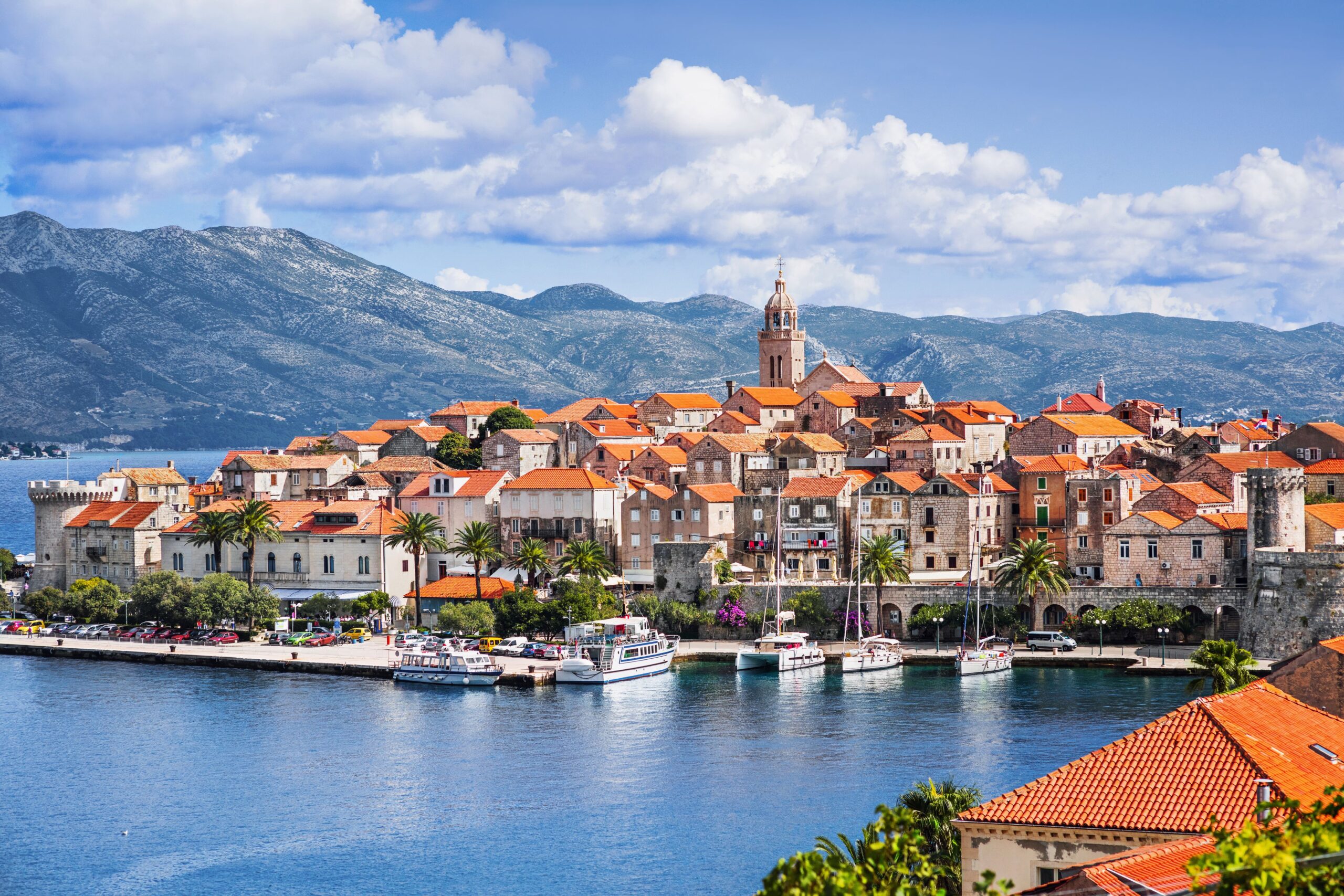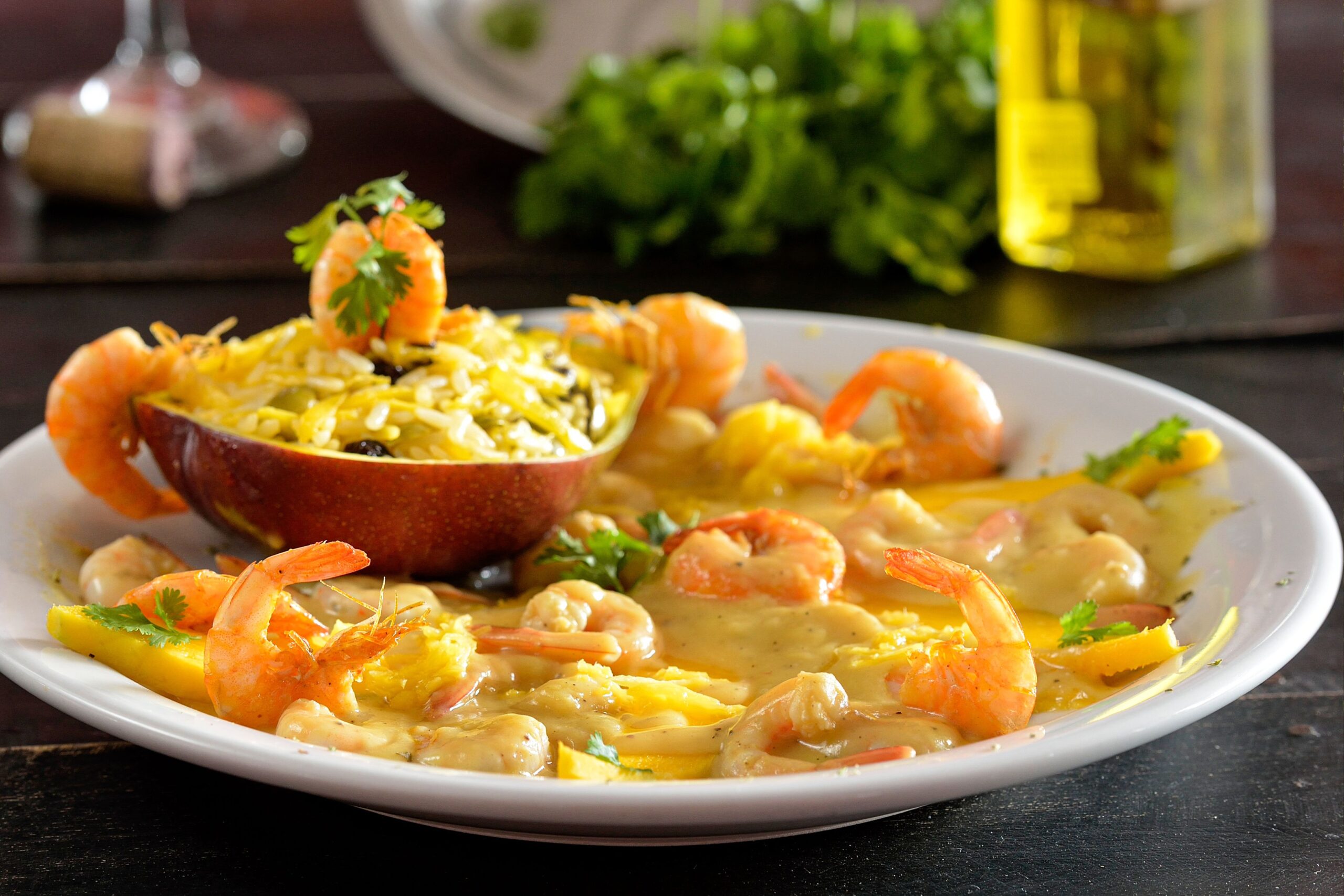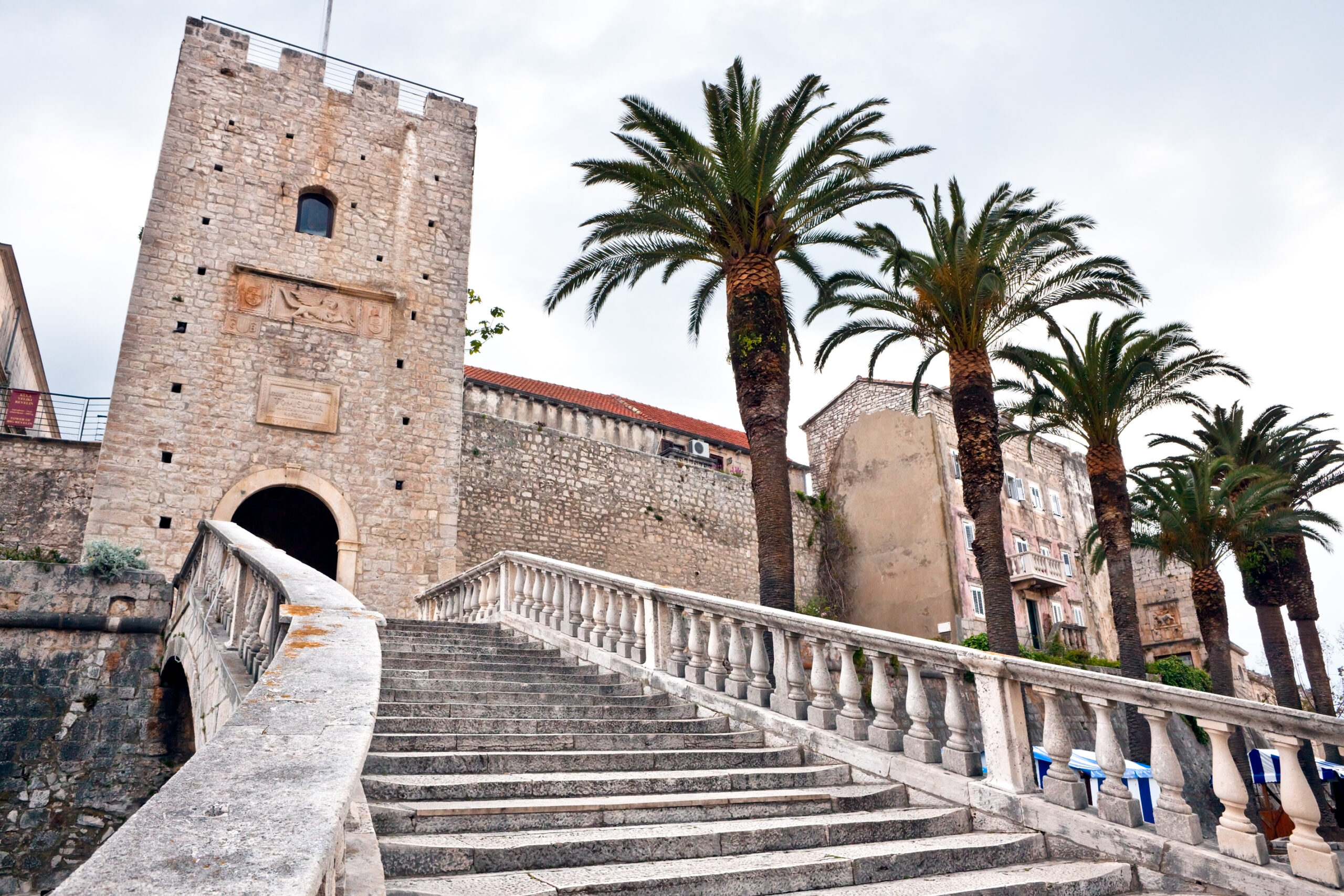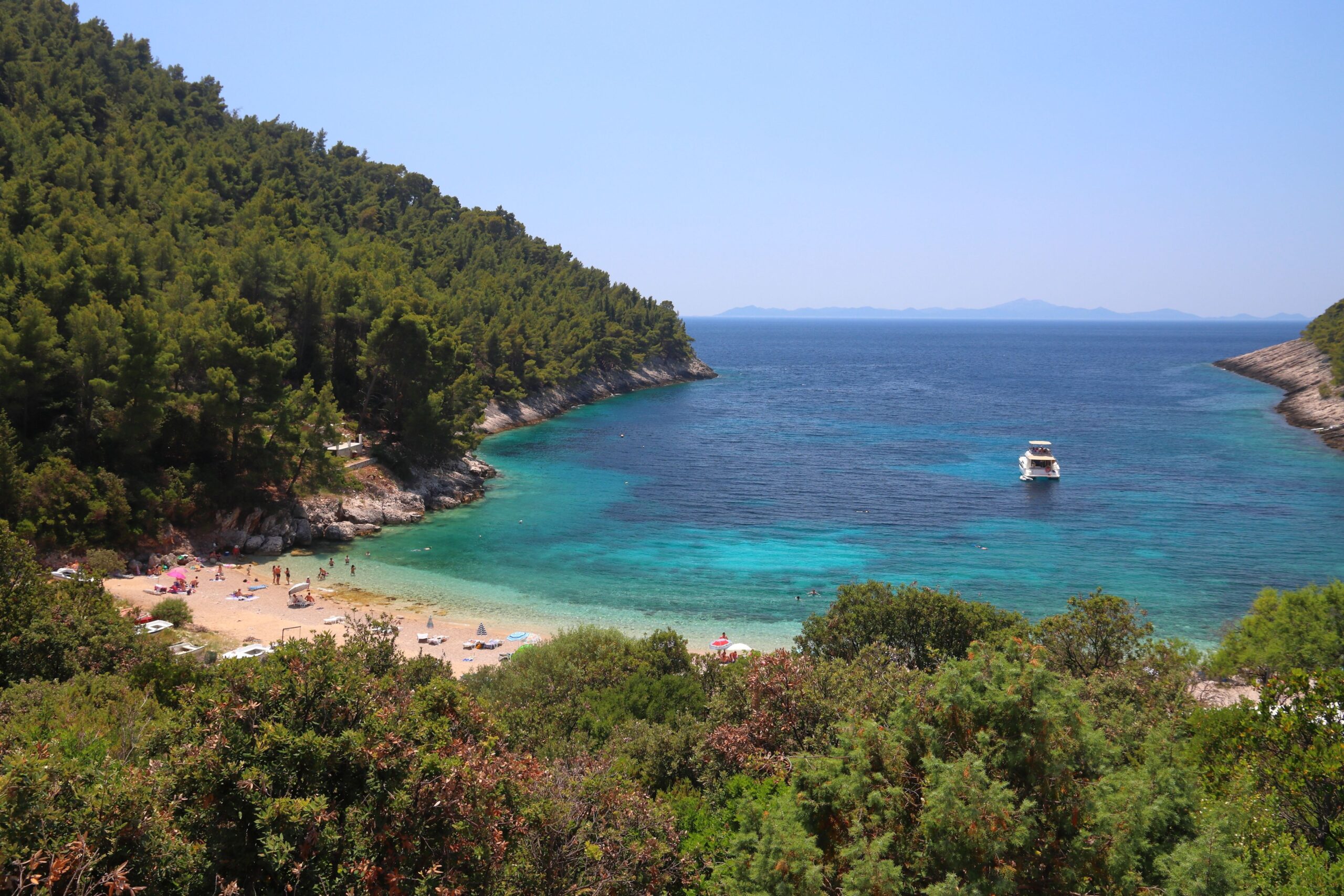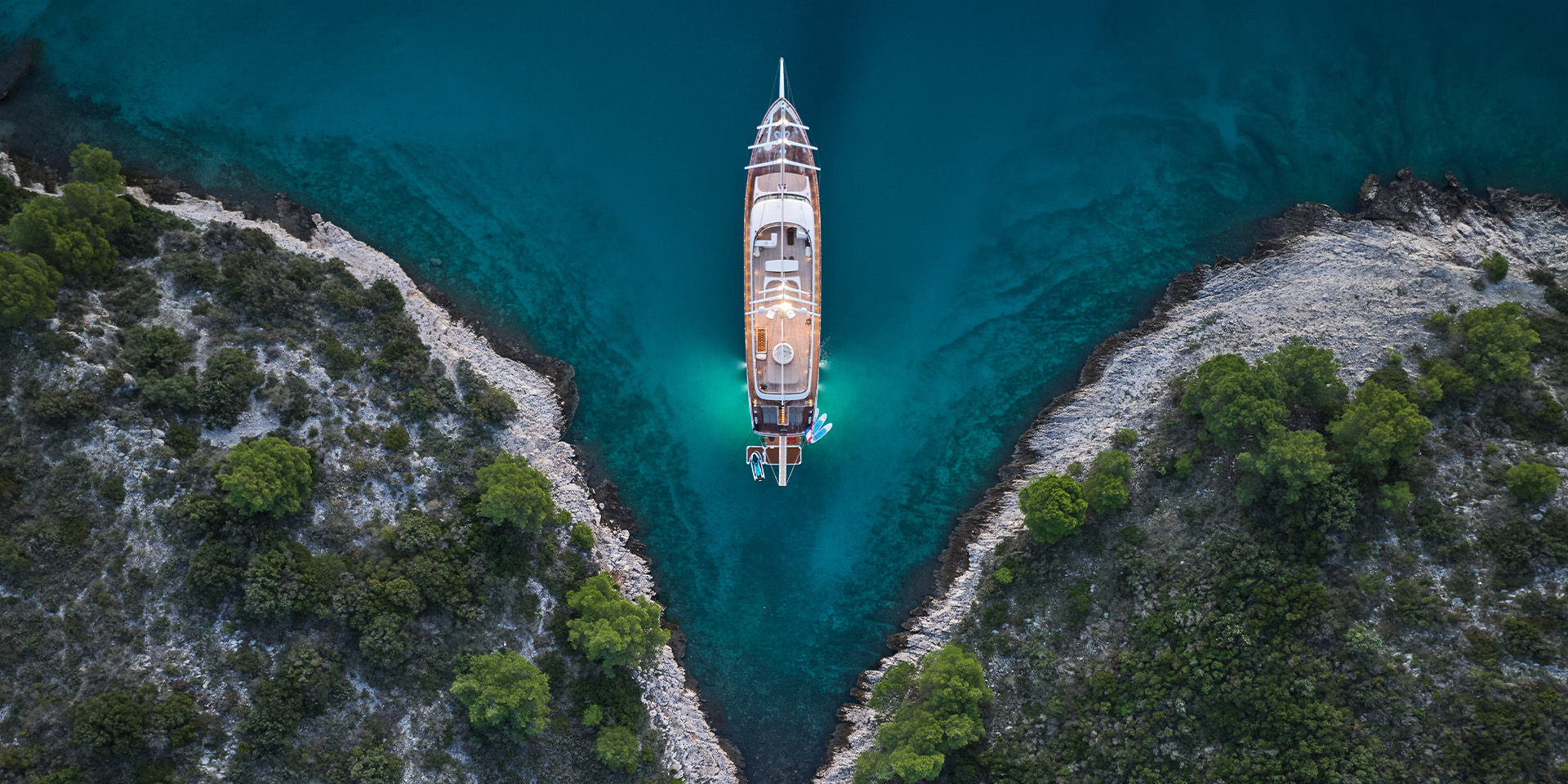The sixth-largest Adriatic island, 46 km long and with its turquoise coast, beaches, caves, coves, capes, and sunlit vineyards, is a real decoration on the Adriatic.
Known as the birthplace of explorer Marco Polo, it is also called “Korkyra Melaina” because of its dense forest.
Located on a small peninsula, surrounded by stone city walls and fortresses, Korčula is a place full of life, art, and turbulent history marked on every stone. Evidence of the island’s first inhabitants was recorded in the Vela cave.
Korcula’s old town is a fascinating place to explore with its Renaissance-Gothic houses, palaces, and churches. The Old Town is entered through the Land Gate at the southern end, and on the west side is the Sea Gate. The layout of this historic place follows the shape of an artsy, looking “fishbone,” with one main street from north to south and many small narrow streets.
The birth house of Marco Polo is a museum in the old town that features 17th-century architecture. The Cathedral Church of St Marko has figures on its pillars representing Adam and Eve, as well an altarpiece with three Saints and a bell tower with a stunning view.
One of the most famous “symbols” of Korcula is the famous traditional Moreski dance with swords, which with a long tradition is performed only on the island of Korcula.
The impressive long promenade by the sea and palms, restaurants that offer delicious meals or wines for your palate. Korcula is well known as a wine-producing island famous for its homemade red ‘Plavac Mali’ wines; white Pošip,’ Rukatac & Grk.’
Korcula is a hidden gem with many pristine beaches and bays. The clear sea meets the sandy shoreline in the southern part of this magical island and shallower and pebble beaches in the north, which you can explore to your heart’s content! There are so many beautiful coves that offer their unique charm – Lumbarda Bay or Pupnat Point, Račišće, Prižba, Badija…

